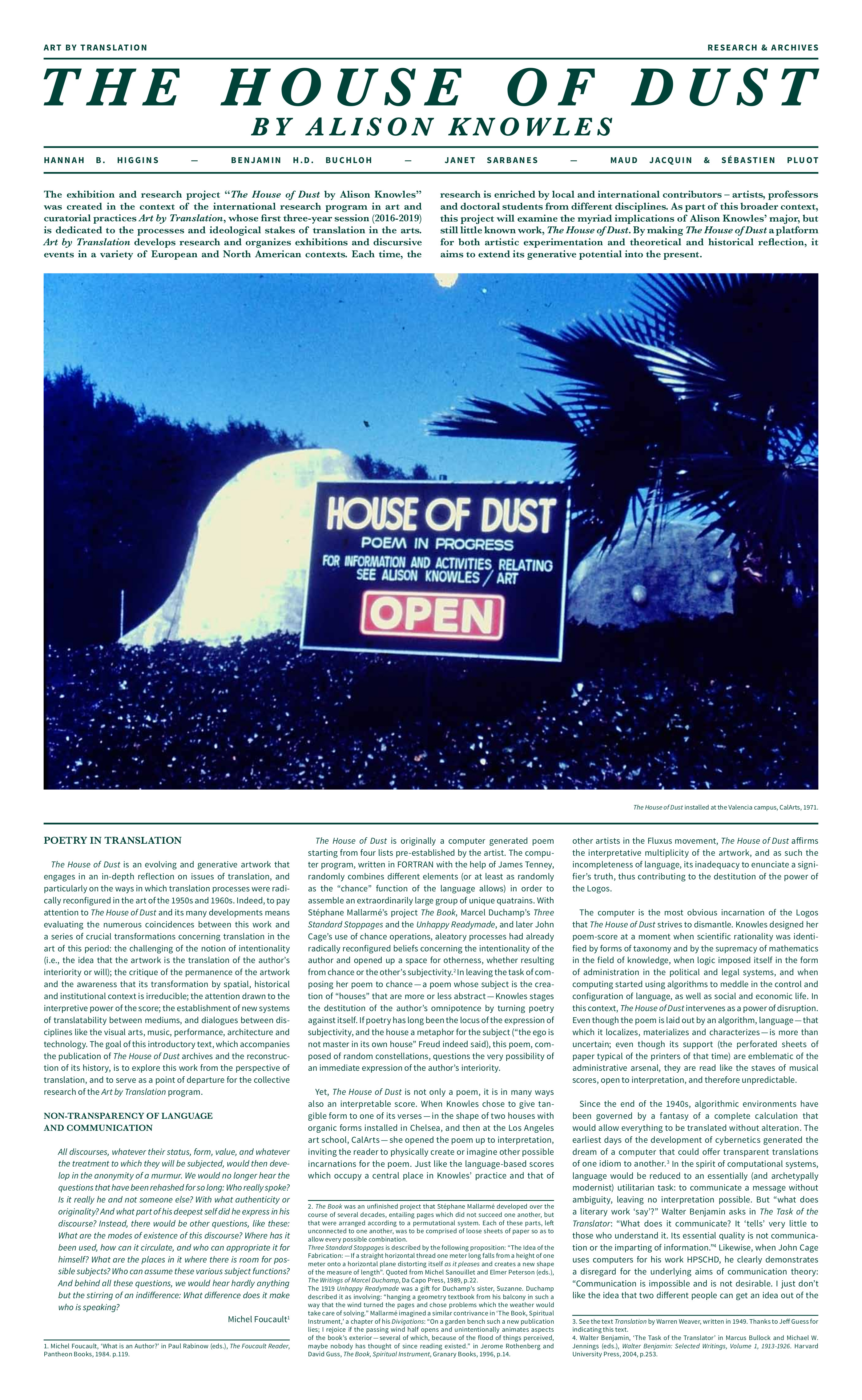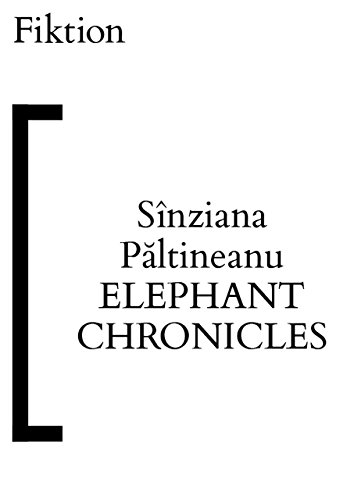Alison Knowles: The House of Dust (2016)
Filed under catalogue | Tags: · architecture, digital poetry, poetics, poetry

“Alison Knowles’s The House of Dust is among the earliest computerized poems, consisting of the phrase “a house of” followed by a randomized sequence of 1) a material, 2) a site or situation, a light source, and 3) a category of inhabitants taken from four distinct lists. In 1968, the computer-generated poem was translated into a physical structure when Knowles received a Guggenheim fellowship to build a house in Chelsea, New York. This architecture was later destroyed, restored and moved to Cal Arts Burbank, California, where Knowles was invited to teach in 1970-72. She enjoyed teaching her classes in the House and invited artists to interact with with its open structure by creating new works.
Reactivating the pedagogical model proposed by The House of Dust (and by Fluxus with which Knowles was associated), this project at CUNY’s James Gallery is the outcome of collaboration between artists and scholars in disciplines including art, architecture, poetry, literature, music, computer science, and performance.”
Publisher The James Gallery, The Graduate Center, CUNY, New York
16 & 12 pages
via Art by Translation
PDF (Research Journal)
PDF (Exhibition Journal)
The Potosí Principle: How Can We Sing the Song of the Lord in an Alien Land? Colonial Image Production in the Global Economy (2010) [English/Spanish]
Filed under book, catalogue | Tags: · art history, colonialism, history, image, mining, painting

“Potosí is a Bolivian mining town, whose splendor even eclipsed that of London or Paris in the sixteenth century. The silver extracted there by forced laborers was instrumental in fuelling the development of early European capitalism. The dynamics of this economic colonialism spawned the production of images on a mass scale, not only in Spain, but also in the vice-royalty itself. The works of the “Andean Baroque” unveiled in The Potosí Principle attest to the fact that cultural hegemony is not a symbolic concept, but is, in fact, rooted in violence.
Contemporary artists have responded to these Baroque paintings by fashioning works of their own. The objective of this dialogue is to demonstrate the correlation between the function served by colonial painting and the function now assumed by the modern system of art in conferring legitimacy upon globalization’s new elites.”
With texts by Sonia Abián, Anna Artaker, Bartolomé Arzáns Orsúa y Vela, John Barker, Matthijs de Brujine, Thomas Campbell, Roberto Choque Canqui, Chto delat, Alice Creischer, Anthony Davies, Elvira Espejo, Marcelo Expósito, Harun Farocki, León Ferrari, Tom Flynn, Maria Galindo, Isaías Griñolo, Max Jorge Hinderer, Karl Marx School of the English Language, Peter Linebaugh, Gabriela Massuh, Eduardo Molinari, Fátima Olivarez, Plata de Refléxion sobre Politicas Culturales, Felipe Guaman Poma de Ayala, David Riff, Jorge Sanjinés, Andreas Siekmann, Luis Víctor Alemán Vargas, and Dmitry Vorobyev.
Edited by Alice Creischer, Max Jorge Hinderer, and Andreas Siekmann
Publisher Verlag der Buchhandlung Walther König, Cologne, 2010
ISBN 9783865609267, 3865609260
303 pages
via dbrvk
Exhibition (Reina Sofia)
Exhibition (HKW)
WorldCat
PDF (33 MB, updated on 2023-7-6)
Comments (2)Sînziana Păltineanu: Elephant Chronicles (2015)
Filed under fiction | Tags: · archive

“The protagonist of Romanian writer and historian Sînziana Păltineanu’s debut novel Elephant Chronicles is a person free of financial concerns who explores a fluid world of temporalities. Fragments, fungi, shadows, and teddy bears accompany this character, who quickly turns to the local archives as an entry point into a past world of sensibilities.”
Publisher Fiktion, Berlin, 2015
Open access
ISBN 9783944818863
English: Online reader, EPUB, MOBI, HTML
German: Online reader, EPUB, MOBI, HTML (trans. Zoë Beck)

